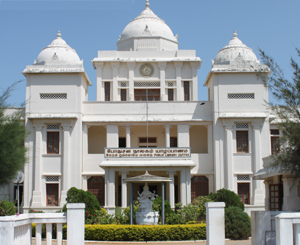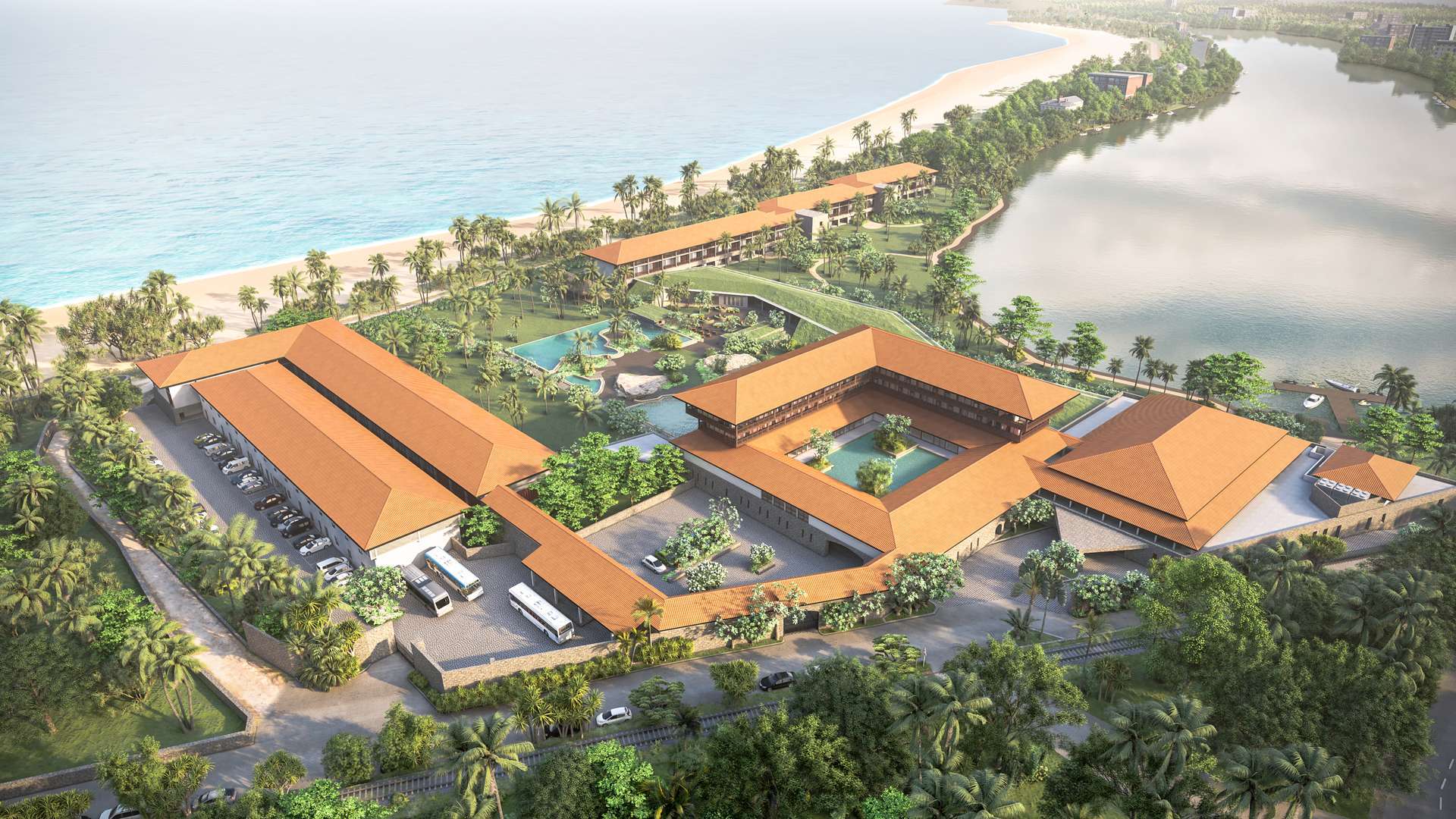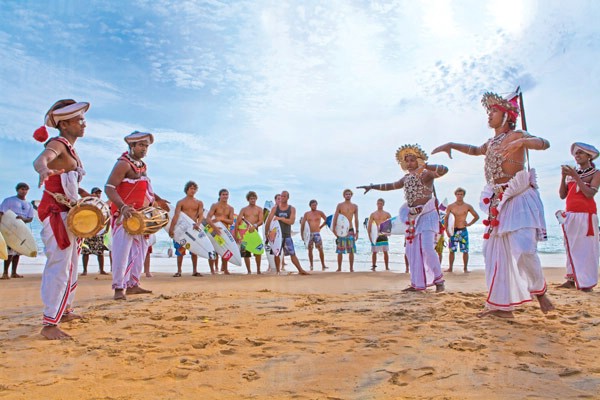

You are here: Home / Destinations / JAFFNA - SRI LANKA

The Jaffna Peninsula is an area in north of Sri Lanka. It is the capital city of the Northern Province . also administrative headquarters of the Jaffna district. One of the oldest habitation sites in Lower South Asia. Jaffna is situated within ten degrees of latitude to the north of the equator. It is in close proximity to the sub-continent of India and separated from it by the Palk Strait and the Bay of Bengal. Jaffna has been a contested city. It was made into a colonial port town during the Portuguese occupation of the Jaffna peninsula in 1619. It changed hands to the Dutch colonials, who lost it to the British in 1796. The majority of the city’s population are Sri Lankan Tamils. The city is surrounded by Jaffna Lagoon to its west and south, Kokkuvil and Thirunelveli to the north, and Nallur to the east. Jaffna peninsula is made of limestone as it was submerged under sea during the Miocene period. The limestone is grey, yellow and white porous type. The entire land mass is flat and lies at sea level. Within one mile of the city center is the island of Mandativu which is connected by a causeway. Palmyrah groves can be seen where land has not been used for construction. Other notable vegetation is a leafless shrub called talai (alae Africana) and koddanai (oleander).
Jaffna features a tropical rainforest climate with no true dry season month. Jaffna has the highest average temperature in Sri Lanka – 83 °F (28 °C). The temperature is highest in the months of April – May and August – September. The temperature is coolest in December – January. The annual rainfall is brought in by the North East monsoon and it varies from one place to the other and also from year to year. The average rainfall is 50 inches in the western part of Jaffna peninsula. Most Tamils are Hindus. Jaffna is 396 km from Colombo. Most historic buildings such as Temples, Saraswathy Mahal library and palaces in the royal city of Nallur and the rest of Jaffna peninsula were destroyed by the Portuguese colonials. Materials from destroyed buildings were used in the construction of the Jaffna fort and other fortifications.
The peninsula is actually almost an island; only the narrow causeway known as Elephant Pass - for once elephants did wade across the shallow lagoon here connects Jaffna with the rest of Sri Lanka. Jaffna is low lying; much of it covered by shallow lagoons, and has a number of interesting islands dotted offshore. In all it covers 2560 square km (999 square miles). With just under 900,000 inhabitants, the district of Jaffna is one of the most densely populated areas of Sri Lanka, second only to Greater Colombo.
Most of the area is dry and sandy, and the most common tree is the palmyra palm with its elegant fan-like fronds. Locals here tap it for toddy, the sap from its cut flowers; like the sap of the coconut or kittul palms, this liquid can be distilled to make arrack or processed into jiggery, palm sugar. The leaves of the fan palm may be skillfully folded to make a beaker for toddy, but you more often see them serving as decorative fences around almost all the settlements.
The flat Jaffna Peninsula is made of limestone, unlike most other parts of Sri Lanka. The porous stone absorbs the rain very quickly and conveys it to the water table. This forms a specifically lighter layer, "swimming," as it were, on the salt water of the Indian Ocean that permeates the rock on all sides up to sea level. Open tanks are not practicable here, and fresh water has to be obtained from wells.
Jaffna has it all, friendly people, a rich culture, salubrious climate and a picturesque environment go to make it a veritable traveler's paradise. Now that the guns have fallen silent and peace is in sight, domestic tourism in this long forgotten northern retreat is gradually catching on. After almost 20 years, travelers now can reach Jaffna either by land or air. The flight, from Colombo to Jaffna, is just under one hour and is quite enjoyable as the plane does not travel at too high an altitude.
There are many places to visit such as;
Nallur temple: “In the list of places of historical importance in Jaffna, Nallur Kumaran Hindu temple stands prominent to many others due to its cultural and religious significance.
Nallur is considered the capital of the old Jaffna kingdom. Situated on the Point Pedro road, in close proximity to Jaffna town, this Hindu Kovil was first built in 948 A.D by Bhuvanekabahu, Chief Minister to Chola Kulangai Arya for Lord Kumaran in Kurukkal Valavu in Nallur.
In 1450, Senbaha Perumal, a warrior in King Parakramabahu’s army came from Anuradhapura to conquer Jaffna, and destroyed the temple. However, after about seven years, Senbaha Perumal who regretted his deed built the temple in Muthirai Chanthai.
Again during the Portuguese invasion, it met the same fate as of 1450 A.D. and it was reconstructed in 1734 in Muthirai Chanthai.
Under Dutch reign, because of the effort taken by Krishna Subbiah, a Brahmin and Ragunatha Mapana Muthaliyar, a government official in 1749, the Kumaran temple was reconstructed in its original site in Kurukkal Valavu with little changes of its architecture”.
Dambakola Patuna Raja Maha Viharaya: “Jaya Sri Maha Bodhi of Anuradhapura, the oldest tree in the world, is among the sacred eight places of worship (Atamasthana) of Buddhists all over the world. It is the southern sprout of the original Jaya Sri Maha Bodhi at Bodhgaya in India.
The sapling was brought here by Sangamitta Therani, the only daughter of King Dharmashoka of India and the sister of Arahat Mahinda who introduced Buddhism to Sri Lanka during the reign of King Devnampiyatissa (306BC-266 BC).
Dambakola Patuna (Jambukola Pattana), located about 20 km from Jaffna town and 10 km from Kankasanthurai is the place where Sangamitta Therani, with the sacred sapling, landed. It was later planted in Anuradhapura Mahamewna Uyana.”
Naaga Deepa Viharaya: “The island of Nagadeepa lying about 24 km away from the mainland was once inhabited with people belonging to Naga clan.
According to the chronicles, a great battle erupted between two Naga kings, Chulodara and Mahodara over the claim of a gem-studded throne. Chulodara is the son of Mahodara's sister and the battle developed after the gem throne was given to Chulodara with the demise of the father of Mahodara who wanted to have the throne in his possession.
God Sumana, a protective deity reached Lord Buddha at Jethavanaramaya in Sravasti to inform of this war to break out soon. Lord Buddha arrived in the island of the Nagas in the 5th year after enlightenment, preached the virtues of non-violence to the two kings and settled the dispute over the gem throne between the uncle and the nephew who offered the gem-studded throne to Lord Buddha.
Later, that throne was enshrined in a stupa for Buddhists’ veneration. The arrival of Lord Buddha occurred on the Bak (April) Full Moon Poya day. Since then Buddhists gather to this sacred island to commemorate Lord Buddha's arrival. Veteran artist Solius Mendis, in his paintings at the Kelaniya Temple, describes how the Nagas became followers of Lord Buddha.
According to legend, God Sumana was a resident of Nagadeepa in his previous birth and had offered some leaves from a tree to Pachcheka Buddhas to clean their alms bowls. This merit made him a deity in his next birth.”
Jaffna library: “The first stage of construction work of the library started in 1933 according to Indo-Saracenic style designed by famous architect Narasimhan from Madras, India.
It began as a private collection but with the help of primarily local citizens, it became a full-fledged library soon. The Library also preserved archival material written in Palm leaf manuscripts, original copies of regionally important historic documents and newspapers that were published hundred of years ago in the Jaffna peninsula. It thus became a place of historic and symbolic importance to Sri Lankan Tamil people.
After about twenty six years of work, the first major wing of the library was opened in 1959 by then Jaffna Mayor Alfred Duraiappah. Prominent Indian librarian S.R. Ranganathan served as an advisor to ensure that the library was built to international standards.
The Jaffna library became the pride of the local people as even researchers from India and other countries began to use it for their research purposes.”
Jaffna fort: “Historic Jaffna Fort, situated on the south of the Jaffna peninsula at the water’s edge of the lagoon is the second largest existing historic Fort in the country.
This was originally built by the Portuguese in 1619 and later during the second half of the 17th and the 18th centuries Dutch who invaded the island after Portuguese re-built and expanded to facilitate their commerce.
This was fortified thick and high ramparts and a wide and deep moat around it. The layout resembles a geometrically regular pentagon, which is defined by the ramparts with a bastion at each corner of the pentagon. Beyond these defense works is the star-shaped moat, the outline of which roughly follows the bastion and rampart walls.
Unlike the Dutch forts at Galle and Colombo, which were fortified towns, the Jaffna Fort had an almost exclusively military and administrative function. The fort is the only surviving example in Sri Lanka, where its inner defenses has a geometrically regular pentagonal layout”.
Kandarodai or Kadurugoda temple: “The name of Kandarodai derives from its original name Kadurugoda, according to historians. Kandarodai can be reached after traveling about 10 km beyond Manippai from Jaffna town. One can see remnants of 61 small dagabas scattered in an area of about ½ acre land of palmyrah trees. Only the foundations of some dagabas are left today. Keen observations convince visitors that those small structures are constructed with ash-coloured stone.
The constructions of theses dagabas bear different features from other Buddhist dagabas elsewhere since they do not distinctively have a square shape part named “Hathares Kotuwa” but ring-shaped structures known as “Pesa Walalu” built one above the other are seen next to the global structures. Dr. Paul E. Pieris who first discovered these dagabas says the constructions are more than 2000 years old.
A Buddha statue, Bodhisattva statue, a stone scripture and some coins believed to have been used in the 1st and 2nd centuries were found during archeological excavations in this area. They are at present kept at the Jaffna museum.
It is legendary that the relics of 60 Arhats who passed-away due to a famine while preaching Dhamma and practicing meditation in Jaffna peninsula are about 2000 years before deposited in those small dagabas. There is a record that a special dagaba with Lord Buddha's relics were also in this premises.
Their bodies had been cremated and the ashes deposited in the small dagabas constructed later by a noble person lived in the area, but no name or any other information has been found in records.
There are many places to visit such as Elephant pass monument, General Dencil Kobbekaduwa monument, Keeramalai pond, Bottomless well and Mawadipuram kovil etc”.


"Thank you Cyril for caring us and giving a very enjoyable tour to all of our family while we are on holiday in Sri Lanka. Definitely we will recommend you to our friends and relatives. Hitendra Molleti and family" Hitendra Molleti
"Dear Cyril, Yes that's the one that we were calling all the time. Her name is Celia and by now she has a little sister. My dear Cyril, of course we can't forget your companion and we are always telling about you when we are talking about our trip to Sri Lanka. I wish you good luck with your company and I hope that you will have whatever you want. I want to tell also that I was very happy when I learned that you are a grandfather now. Best regards, Chris Greece 26/07/2011" Cristos Pravitas - Greece
"Hello, We had 2 weeks exploring Sri Lanka and for most of that time Cyril drove for usto various towns, sites of interest. Cyril wsa a very pleasant chauffeur. Always prompt and greeted us with a smile. He was well informed about the sites we visited and pointed out many interesting historical buildings en-route. We had a great 2 weeks in Sri Lanka and Cyril's plesant and helpful nature contributed to this briliant holiday. Thank Cyril Sara and Steve from Birmingham, England" Sara and Steve
"Thank you so much Cyril for guiding us around your beautiful country. We thoroughly enjoyed our time which was made particularly special by your professionalism, enthusiasm and friendliness. We wish you all the best in the future. Warm regards from, Aonghus O'Keefee and Sheela Hendricks- Ireland " Aonghus and Sheela Hendricks- Ireland
"Dear Cyril, We would like to thank youthat you have arrange ourholiday which we have enjoyed so much, that we can call them the best holiday we have ever had. You are avery helpful guide- because you know about your beautiful country very much. We also appriciate your advices that you gave us during our two weeks long journey and your perfect trip arrangement we have enjoyed every single day. All the best to you and your family. Hope to see you again. Martha & Jarda 08 No..." Martha & Jaroslav Jirout
"We had a fantastic holiday in Sri Lanka, thanks Cyril Tours, Our driver, Amiila, was brilliant and nothing was too much trouble for him. The places we visited were really interesting and we saw some lovely scenery.I would definitely recommend your company to other people. Emma - UK 2010 December " Emma Patterson
"We highly appreciated Cyril as our chauffeur guide. We can easily speak with him about any subject. We learnt a lot about Sri Lanka' s culture, history and way of life. He arrange everything we asked. In the airport on arrval his welcome is marvelous. His English language is superb and very clear. His knowledge and expanation about the sites are unique. More than the all he is very friendly and punctual. We will recommend him all the people who willing to come to Sri Lanka." COMBE MARTIAL AND WILD EMMANUEL FROM FRANCE
"We had a exellent and memorable trip. That all credit to you Cyril.Indepth knowledge about the place, roads, Culture and history. Very matuared and patient. We were in very safe hands on all the time. Thanks a lot, mainly it's memorable expeirience for all of us. We always recomond CYRIL TOURS to our friends and relatives in Dubai and in India." Awdhesh Kumar and gruop
" Our Tour in Sri Lanka Traveling through the beautiful Sri Lanka has been great. Cyril warmly welcomed us at the airport and drove us with his always clean car in every part of the country. He provided daily information about the history and the different sites of Sri Lanka. Also, he taught us a lot about Sri Lankan culture, starting from food, traditions, animals and nature, and suggested authentic and less known places we c..." FILIPPO MASI FROM ITALY
"Excellent tour guide Cyril is a great tour guide and is very knowledgeable. He made our entire trip super comfortable. His vehicles are clean and well maintained. He is also very flexible if changes are needed. Definitely recommend!" Berenice Coelho

.jpg)






